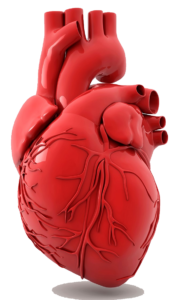Specialities
CARDIOLOGIST - SPECIALITIES

PACEMAKER
A pacemaker is a small device that's placed under the skin in your chest to help control your heartbeat. It's used to help your heart beat more regularly if you have an irregular heartbeat (arrhythmia), particularly a slow one.Depending on your condition, you might have one of the following types of pacemakers. 1. SINGLE CHAMBER PACEMAKER : This type usually carries electrical impulses to the right ventricle of your heart.2. DUAL CHAMBER PACEMAKER : This type carries electrical impulses to the right ventricle and the right atrium of your heart to help control the timing of contractions between the two chambers.3. BIVENTRICULAR PACEMAKER : Biventricular pacing, also called cardiac resynchronization therapy, is for people with heart failure with abnormal electrical systems. This type of pacemaker stimulates the lower chambers of the heart (the right and left ventricles) to make the heart beat more efficiently.Pacemakers are implanted to help control your heartbeat. They can be implanted temporarily to treat a slow heartbeat after a heart attack, surgery or medication overdose. Or they can be implanted permanently to correct a slow or irregular heartbeat or, in some people, to help treat heart faliure symptoms.WHAT A PACEMAKER DOES : An implanted electronic pacemaker mimics the action of your natural electrical system. A pacemaker comprises two parts:1. PULSE GENERATOR : This small metal container houses a battery and the electrical circuitry that regulates the rate of electrical pulses sent to your heart.2. LEADS (ELECTRODES) : One to three flexible, insulated wires are each placed in a chamber, or chambers, of your heart and deliver the electrical pulses to adjust your heart rate.Pacemakers work only when needed. If your heartbeat is too slow (bradycardia), the pacemaker sends electrical signals to your heart to correct the beat. Also, newer pacemakers have sensors that detect body motion or breathing rate, which signal the pacemakers to increase heart rate during exercise, as needed. Now a days leadless pacemakers, which can be implanted directly into the heart, have been approved for use in our country also. Because a lead isn't required, this device can minimize certain risks and speed recovery.RISKS : Complications from surgery to implant your pacemaker are uncommon, but could include: Infection where the pacemaker was implanted, Swelling, bruising or bleeding at the generator site, especially if you take blood thinners, Damage to your blood vessels or nerves near the pacemaker,
